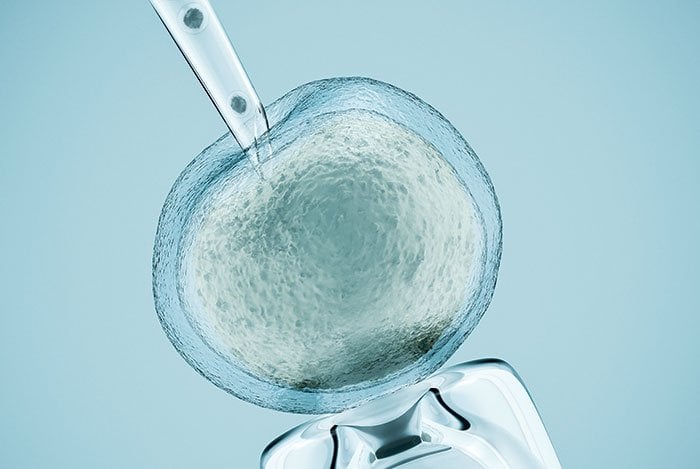IVF is a hard road to parenthood. It’s invasive, time-consuming, costly—and it often doesn’t work. But a new test from Los Altos, Calif.-based Univfy offers patients information most would want to know before choosing IVF: What are the odds it will work?
What is Univfy?
Basically, it’s a very powerful prediction model developed by my Stanford colleague Prof. Wing Wong and me. We decided to start a company, and now Univfy offers two online tests that can predict a patient’s chance of success, defined as live birth, with IVF.

How did you develop these tests?
I was recruited to Stanford in 2003 to start a research lab, which focused on early embryo development. But I also wanted to link what was happening in the lab with problems doctors were seeing in the clinic, like nonviable embryos or failed IVF cycles. That’s when I started analyzing clinic data and teamed up with Prof. Wong, who is an amazing statistician.
What information is typically available to IVF patients?
IVF success rate is presented to patients now by age group. But we found that providing an average success rate is actually very misleading.
Why is this traditional analysis inaccurate?
Because chronological age is not always consistent with the age of the ovaries. The assumption now is that the older a patient is, the fewer eggs she will have, and fewer eggs means fewer embryos. But every woman’s ovaries age at a different pace.
What type of analysis does Univfy use?
A data mining technique called “boosted tree” that all of us are familiar with—when online shopping recommends products to you, that is data mining at work. But people in fertility had not used it before.
So how do Univfy’s tests work?
Our two tests take into account multiple predictors, not just age. The first, called PreIVF, predicts the chances of having a baby in your first IVF. It is based on information that a patient would already know—age, body mass index, reproductive history such as pregnancies or miscarriages, any previous diagnoses of infertility or reproductive disorders, whether she is a smoker and some lab test results, if she’s done them— the Day 3 FSH, which is an indication of how the ovaries are functioning, and the husband’s sperm count.

Our second test is called PredictIVF, and it is for patients who have already done one to four IVF cycles. We can use information learned from those—for example, the number of eggs retrieved and embryo quality.
How accurate are Univfy’s tests?
More than 1,000 times more accurate than the age estimations.
Who should take them?
The PreIVF test is for women 42 or younger who have never had IVF. For PredictIVF, the woman must be under 45 and 42 or younger when she had her first IVF.
How does the test work?
The patient can take it through participating providers and clinics or online. Patients register, create an account and answer the short questionnaire. Once it’s completed, you have your results in seconds.
What does it cost?
PreIVF is $49.50, and PredictIVF is $175.
Does Univfy make recommendations based on the results?
No. Calculating the probability is the objective part. The subjective part is what success rate is good enough. That’s different for every woman.
Are you concerned about patients receiving bad news from a computer?
This is intended to be a piece of information that supports a conversation with a doctor, not replaces it.
For more information, contact Dr. Mylene Yao, [email protected], 650.961.1307, univfy.com








